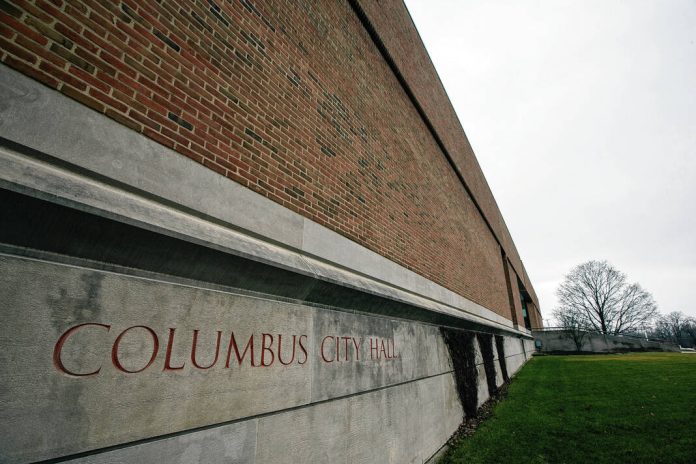COLUMBUS, Ind. — Columbus City Council members have approved on first reading an ordinance that would result in a slight increase to one of the city’s tax rates.
In a split 5-3 vote, the council approved on first consideration reestablishing the cumulative capital development fund to support capital projects for Columbus police and fire departments with a rate set at $0.05 per $100 of assessed value, the maximum allowable by state law. Council members Chris Bartels, Jay Foyst and Kent Anderson voted against the ordinance on first reading. Councilman Jerone Wood was absent.
City officials said most taxpayers wouldn’t notice much of a difference in their bill, but several council members expressed apprehension at any raise in taxes given concerns about inflation and prices.
The fund, originally established in 1984, can be used for a variety of purchases, but “is primarily used to fund capital for our police and fire and has been a significant help in providing equipment needed by our public safety members,” City Controller Regina McIntyre told council members.
Increasing the rate would provide for approximately $175,000 in funds per year “to allow for more capital investments in public safety,” according to McIntyre.
In 2024, McIntyre said the city used $2.1 million “for public safety capital out of this fund” and in the previous three years it was “around $1.2 to $1.4 (million) total.”
“We did dig into the reserves for this year’s budget out of this CCD fund in order to fund more needs,” McIntyre told the council. “The fund has been heavily used year to year, and it’s not necessarily one of those funds that’s growing, there’s definitely demand every year that is very healthy demand and continues to grow as equipment and such gets more expensive.”
Mayor Mary Ferdon said the city received $19 to $20 million worth of capital requests last year and “funded about $12 (million),” through a variety of means including CCD.
The new rate would be levied beginning in 2025, according to a notice from the city. The rate had sat at $0.0465 per $100 of assessed value for the previous three years.
According to McIntyre, the increase would have a limited impact on taxpayers. She said there are three types of taxpayers in Indiana— one’s with a 1% cap on their property taxes, another with a 2% cap and another group with a 3% cap.
Those with the 1% cap, McIntyre described as average homeowners.
“Those with the 1% cap are typical homeowners with a homestead deduction and supplemental deductions, those folks will not be impacted for the most part. Because of the cap, it does not exceed the current tax rate. And so by increasing this rate on this fund, it has virtually no impact. There are a few of those homeowners, the impact is $2 a year.”
The 2% group includes “most of our rental properties,” McIntyre said.
“That group is not impacted whatsoever, because again, the rate is above that 2% cap. And so any changes to the rate will not impact the property tax.”
However, the 3% group, consisting of commercial and industrial entities will be impacted, according to McIntyre.
“For example, a company with a $20 million assessed value currently pays about $500,000 annually in property tax, the impact of re-establishing the rate to this fund would increase that by $700,” McIntyre said. “So fairly minimal in the grand scheme of how much they’re already paying, but I did want to share that because I know whenever you talk about property tax rates, that is usually the biggest concern— how is that going to impact our taxpayers.”
City Council has frequently voted to re-establish the rate in the past, most recently in 2022, although Council President Frank Miller said the raise then didn’t actually occur “because of the rule changes that were going on at the time,” referring to legislation that amended the process for establishing or re-establishing cumulative funds.
McIntyre said the rate would often shrink, necessitating another vote to re-establish the fund again to raise the rate back. Changes made in 2022 to Ind. Code § 6-1.1-41 ensure the rate will no longer fall in the future, so if council does decide to raise the rate, it would be the final time they would have to do so, McIntyre said.
A second reading on the ordinance is scheduled for May 21.





